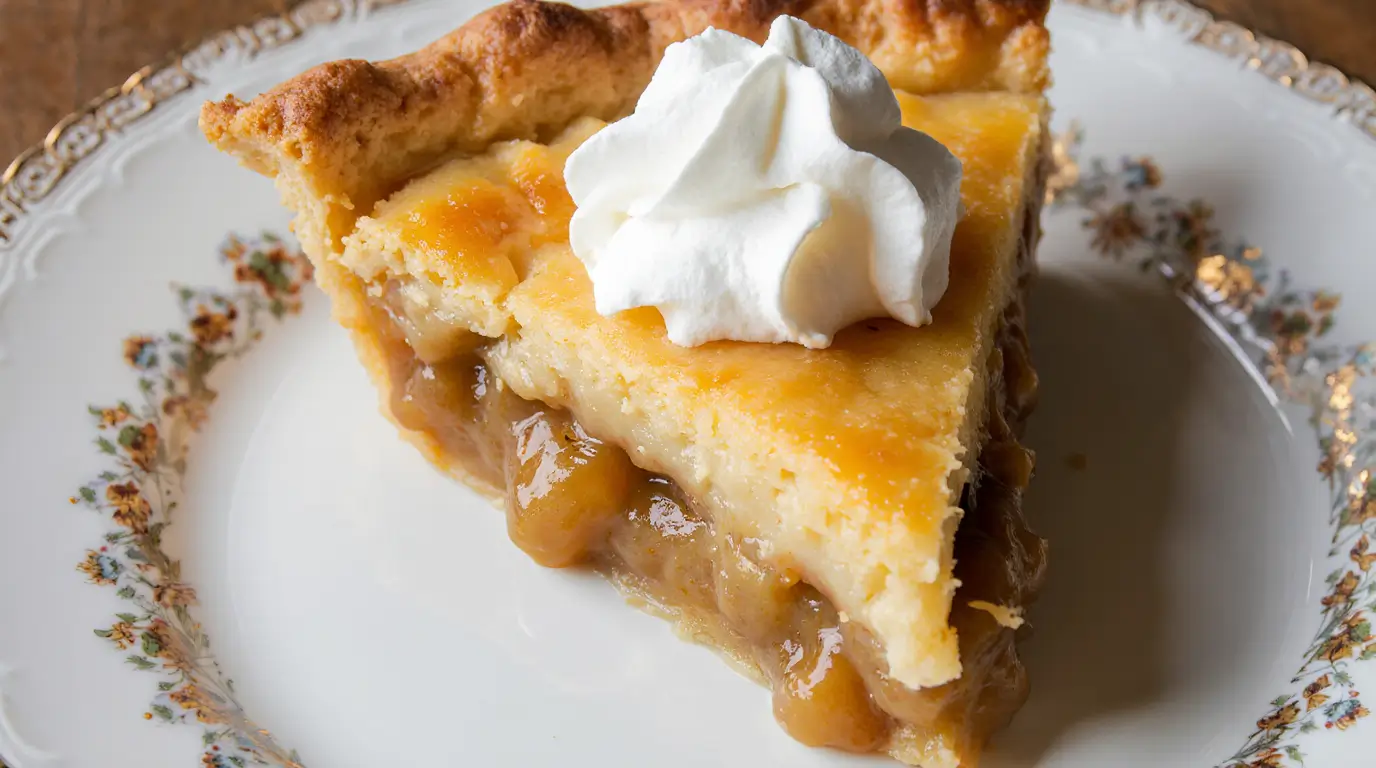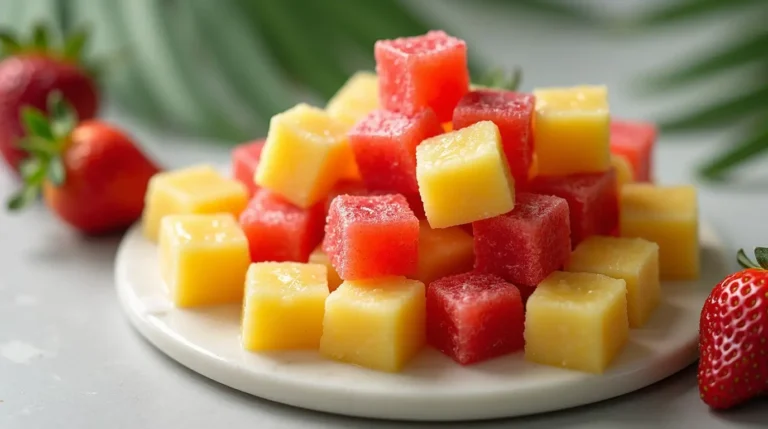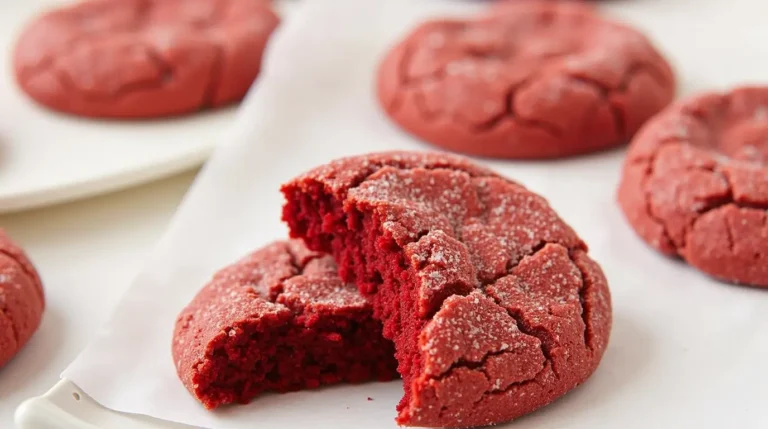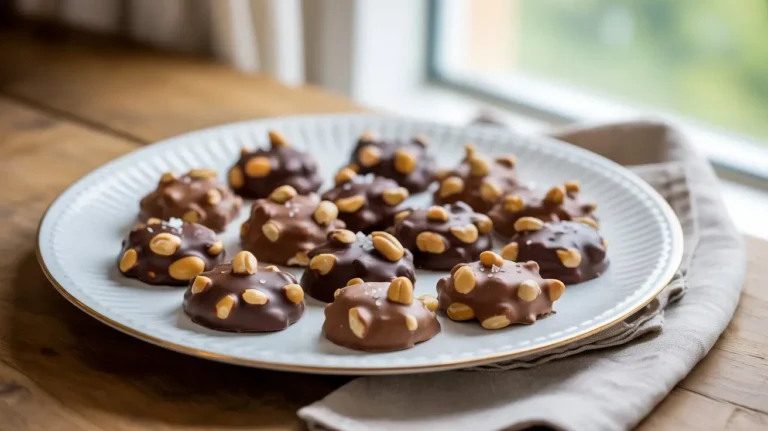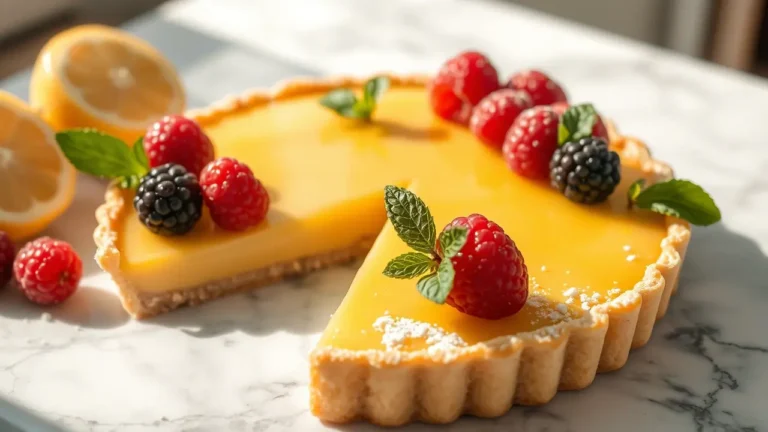Chess Pie Recipe: 7 Delicious Variations You Need to Try
Chess Pie Recipe
Few desserts capture the spirit of the American South quite like Chess Pie. With its rich, sweet filling and flaky crust, this pie is both humble and indulgent. Known for its simplicity and made with pantry staples, Chess Pie is a go-to recipe for Southern grandmothers and modern home bakers alike. In this guide, we’ll explore its roots, how to make it perfectly, and the delicious variations that make it a cherished classic.
Table of Contents
What is Chess Pie Recipe?
Chess Pie is a custard-based dessert with a dense, sugary filling and a crisp, buttery crust. At its core, it’s made with a mixture of sugar, eggs, butter, and cornmeal—yes, cornmeal—which sets it apart from other custard pies. A splash of vinegar or lemon juice balances the sweetness and prevents it from becoming cloying. The texture is slightly crispy on top with a gooey, almost caramel-like center.
While it’s often compared to buttermilk or sugar pie, Chess Pie holds its own with a distinct flavor and texture. It’s the ultimate example of Southern frugality turned into something magical.
History and Origins
The true origins of Chess Pie are somewhat mysterious. Historians believe it dates back to the 1700s or 1800s in the American South, though no one knows exactly where or how it began.
There are several theories about the name:
- One popular story says a Southern cook was asked what kind of pie she had made, and she replied, “It’s jes’ pie”—which over time became “chess pie.”
- Another theory ties the name to the pie chest, where sweet pies were stored before refrigeration. “Chest pie” eventually evolved to “chess pie.”
- Some even suggest the name is linked to the British cheese pie, although Chess Pie contains no cheese.
Despite the uncertainty, one thing is clear: Chess Pie has become a cherished symbol of Southern heritage and culinary ingenuity.
Ingredients (and Why They Matter)
To make a classic Chess Pie Recipe, you don’t need anything fancy—just these essentials:
- Sugar (1½ cups): The foundation of sweetness. Some versions use brown sugar for added depth.
- Eggs (4 large): They give structure and create the custard texture.
- Melted unsalted butter (½ cup): Contributes to the filling’s creamy texture and enhances the flavor with a luxurious mouthfeel.
- Cornmeal (1 tablespoon): Offers a slight crunch and acts as a natural thickener, ensuring the pie sets properly.
- White vinegar (1 tablespoon): Provides just enough tang to offset the sugar and create a balanced flavor profile.
- Vanilla extract (1 teaspoon): Enhances flavor and aroma.
- Milk (¼ cup, optional): Some recipes include a bit of milk or cream to soften the texture.
- Pie crust (1, unbaked): You can either prepare a homemade one or use a ready-made version for convenience.
Classic Chess Pie Recipe (Step-by-Step)
Ingredients:
- 1½ cups granulated sugar
- 4 large eggs
- ½ cup melted unsalted butter, cooled slightly
- 1 tablespoon yellow cornmeal
- 1 tablespoon white vinegar or lemon juice
- 1 teaspoon vanilla extract
- ¼ cup milk (optional for creamier texture)
- 1 9-inch pie crust (unbaked)
Instructions:
- Preheat oven to 350°F (175°C).
- In a large mixing bowl, whisk the eggs until fully blended.
- Add sugar and continue whisking until the mixture becomes smooth and lightened in color.
- Gently incorporate the butter, cornmeal, vinegar, vanilla extract, and milk (if using), stirring until the filling is well combined.
- Pour the mixture into the prepared pie crust.
- Set the pie on the center rack of your oven and bake for 45 to 50 minutes. The top should appear golden, and the filling should give a slight jiggle when gently nudged.
- Let the pie cool on a wire rack for at least an hour before serving.
Baking Tip: If the edges of your crust start to darken too soon, use foil or a pie shield to protect them and ensure even browning.

Traditional vs. Modern Variations
While the traditional Chess Pie is delicious in its original form, creative bakers have introduced some flavorful spins:
- Lemon Twist: Incorporate fresh lemon juice and zest to brighten the filling with a tangy, citrus flavor.
- Chocolate Version: Blend in unsweetened cocoa or melted chocolate for a fudgy texture.
- Buttermilk Style: Replace regular milk with buttermilk for a tangier taste.
- Coconut Infusion: Fold in shredded coconut for extra texture and tropical flavor.
- Maple or Molasses: Substitute part of the sugar with maple syrup or molasses for depth and complexity.
Common Mistakes to Avoid
- Overcooking: Baking the pie too long can lead to a rubbery or overly firm texture.
- Omitting acid (vinegar or lemon): This step is crucial—it offsets the sweetness and gives the pie a more nuanced flavor.
- Too much cornmeal: A little goes a long way. Excess can overpower the delicate filling.
- Cutting before it cools: Allowing the pie to cool helps it firm up so slices hold together neatly.
- Using a weak or cracked crust: A well-prepared crust is essential for holding the filling and avoiding leaks.
How to Serve and Pair Chess Pie
Chess Pie Recipe is wonderfully versatile. It’s typically served at room temperature but can also be enjoyed warm or chilled. Here are some pairing ideas:
- Toppings: Fresh whipped cream, vanilla ice cream, or fresh berries.
- Drinks: Sweet tea, bourbon, black coffee, or a dessert wine.
- Occasions: Holidays, potlucks, family dinners, or anytime comfort is needed.
Nutrition Facts (Per Slice)
- Calories: ~420
- Sugar: ~35g
- Fat: ~20g
- Carbohydrates: ~50g
- Protein: ~4g
Contains eggs, dairy, and gluten. For lighter versions, try reducing sugar or using plant-based milk and butter.
Cultural Significance
Chess Pie Recipe isn’t just dessert—it’s a Southern tradition. You’ll find it on holiday tables, in church potlucks, and in generations-old family cookbooks. Its simplicity and charm make it a symbol of Southern hospitality, and its enduring popularity speaks to its timeless appeal. Even NPR and Britannica have celebrated it as part of American culinary history.
FAQs About Chess Pie Recipe
1. Why is it called Chess Pie Recipe?
The most popular theory is that someone once said, “It’s just pie,” and the Southern drawl turned “just” into “jes’” or “chess.” Others believe the name came from pie chests where it was stored.
2. What’s the difference between Chess Pie Recipe and Buttermilk Pie?
Buttermilk Pie uses buttermilk and has a slightly tangier flavor, while Chess Pie Recipe is sweeter, denser, and usually contains cornmeal and vinegar.
3. Should you refrigerate Chess Pie Recipe?
Yes, after it has cooled completely. While it can be left at room temperature for a few hours, refrigeration extends its shelf life to 4–5 days.
4. Can you freeze Chess Pie Recipe?
Absolutely. Wrap tightly in plastic and foil, and it can be frozen for up to 2 months. Thaw overnight in the fridge before serving.
5. How do you know when it’s done baking?
The top should be golden and set, with a slight jiggle in the center—similar to a custard pie.

Final Thoughts
Chess Pie Recipe is a sweet slice of American history—simple, satisfying, and steeped in tradition. Whether you prefer it classic or with a twist, baking Chess Pie is more than following a recipe; it’s participating in a rich Southern legacy. Grab a fork, slice in, and enjoy the sugary comfort of a timeless treat.
You’ll also find helpful links to inspire other fun dessert ideas from Freshly Made Recipes, such as their Unicorn Cake

